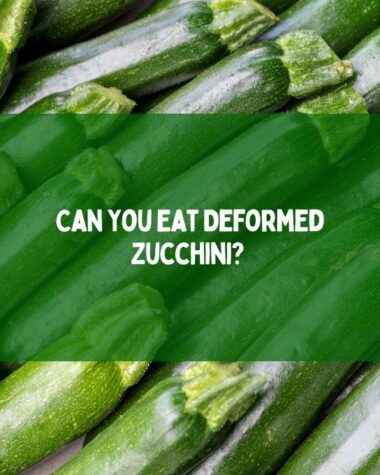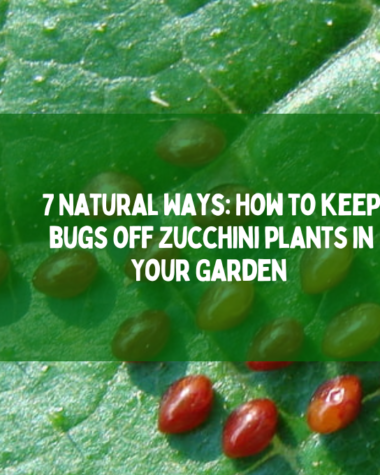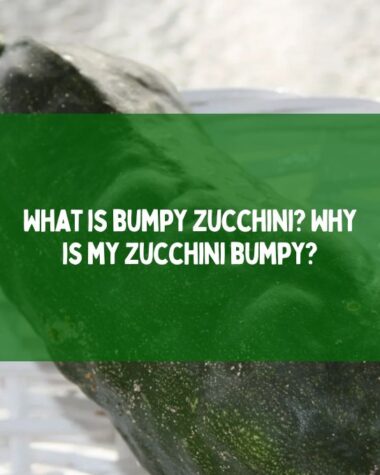Everyone likes to see healthy zucchini plants. The vibrant green color of healthy zucchini foliage comes from the chlorophyll it produces through photosynthesis. There are a few reasons why the tips of your zucchini leaves might be turning brown.
It most likely results from a disease, a large number of pests, or either not enough water or too much water. I’ve listed the top 5 reasons why zucchini trees have dark leaves, along with ways to fix them.
Why are the leaves on my zucchini turning brown, and what can I do about it?
If the leaves on your zucchini plant are turning brown, it may be due to several factors, such as pest infestation, disease, inadequate watering, nutrient deficiencies, or a lack of sunlight. Here are the 5 main reasons why zucchini leaves turn brown:
1. Not Getting Enough Sunlight
Like other veggies, zucchini needs full light in order to grow well. Zucchini needs at least six hours of sun every day. Your zucchini plants’ foliage will start to change from yellow, then brown, and they will produce fewer fruits if they don’t receive enough sunlight.
Solution:
Put your zucchini plants where they will get more sun. If you grew your zucchini in a pot, this is a simple job. But if they are in the ground, you will need to move them.
Things to consider:
Because zucchini is a permanent plant, it will usually go to sleep and die after it has produced fruit. So it’s not a big deal if you see the leaves getting darker in the fall.
2. Overwatering
The seeds of zucchini need about an inch of water every week. If you give them more than that, the leaves will turn brown and the roots will start to rot. Fungus diseases, which I’ll talk about later, can also spread to a plant’s leaves if they are too wet.
Solution
Only water zucchini plants when the soil is completely dry. Put your finger on the ground to see if this is true. You do not yet need to moisten it if it feels wet. Also, to keep the plant from getting sick from fungus, only water the roots and not the leaves.
Mixing light soil, like grit and dung, with heavy soil can also keep you from soaking too much. Because of this, the water will be able to move better.
Things to consider
If you want the leaves to evaporate before sundown, water them early in the day. Also, because sand loses its moisture quickly, you may need to water your zucchini plants more often if you put them in sandy soil.
If the dirt is thick and doesn’t dry out quickly, you might need to water less often because the roots could rot in wet soil. If you want to grow zucchini in a pot, make sure the bottom of the pot has holes for air circulation.
Related Reading:
- What is Zucchini Summer Squash and How to Plant Zucchini from Seeds?
- How to Find, Prevent, and Treat Zucchini Plant Problems?
3. Underwatering
If you don’t water your zucchini plants enough, their leaves will start to wilt and turn dark. The plant’s leaves are drying out because it is not getting enough water.
Solution
Increase how often you water your zucchini plants until the soil is moist but not soggy. Put your finger on the ground to see if this is true. If the plant seems dry, give it some water. You can also use a mulch to keep the soil around a plant moist.
Things to consider
Since pots dry out quickly, you’ll need to check the soil more often if you grow zucchini in one. Don’t quickly give your dried-out zucchini plants too much water, because this could scare them and make the leaves turn dark.
Instead, water deeply and slowly to make sure the roots get enough water. Because of this, there isn’t much you can do to save your plants besides giving them enough water and food.
4. Broken Roots
If you hurt the roots of your zucchini plants, they won’t be able to get enough water and food, which will make the leaves turn dark. Pesticides, chemicals, moving, or big tools can all harm roots.
Solution
Carefully pry the plant up and look at the roots if you think they might be damaged. If the roots of the zucchini are damaged, you will need to move them to new soil. To stop the spread of disease even more, you should cut off dead leaves and stalks.
Things to consider
Zucchini plants are fragile around the roots, so be careful when you touch or move them. Most of the damaged roots.
5. Not Enough Food
Not getting enough food is also the answer to why the leaves on my zucchini plant are turning brown. If zucchini trees don’t get enough of certain nutrients, their leaves can turn brown. Most of the time, zucchini plants need the following elements: nitrogen, phosphate, potassium, calcium, iron, magnesium, manganese, sulfur, and zinc. Chlorophyll, which the plant produces from nitrogen, potassium, sulfur, magnesium, and iron, is what gives the leaves their green color.
If these chemicals aren’t there, the leaves will change color before they turn brown.
Also, plants can’t use an iron when the soil has too much calcium, manganese, phosphorus, copper, potassium, or zinc. This is because the iron links to these elements and makes them unusable to plants. Because of this, the leaves will also turn yellow before going brown.
Solution
The best way to deal with a lack of minerals is to have a soil test done. This will help you figure out what minerals the earth needs more of. Once you know this, you can use the right fertilizer to fix the soil.
To make up for missing nutrients in the soil, you can add compost or dung that has had time to break down. This recyclable material will help improve the quality of the dirt and give the plant what it needs to grow.
Things to consider
Zucchini plants need to be fed every two to three weeks. Don’t forget to follow the directions on the box for how to use chemical nutrients. Before you plant, make sure that any organic waste has been completely broken down and mixed into the soil.
If you don’t have enough iron, adding cow dung to your zucchini plants won’t help as much as adding chicken or horse poop. There is a lot of phosphorus in cow dung, which can make things worse.
Related Reading:
- Why Are My Cucumber Leaves Turning Yellow?
- Cucumber Leaf Curl: Causes and Solutions for Healthy Plants
Final Words
We hope you get the answer to why the leaves on my zucchini plant are turning brown. Keep your yard clean and watch out for bugs to keep zucchini leaves from turning brown. If you find bugs, you should get rid of them right away. If the leaves have already turned dark, you don’t have much choice but to get rid of the plant and hope that your other plants are not affected.







